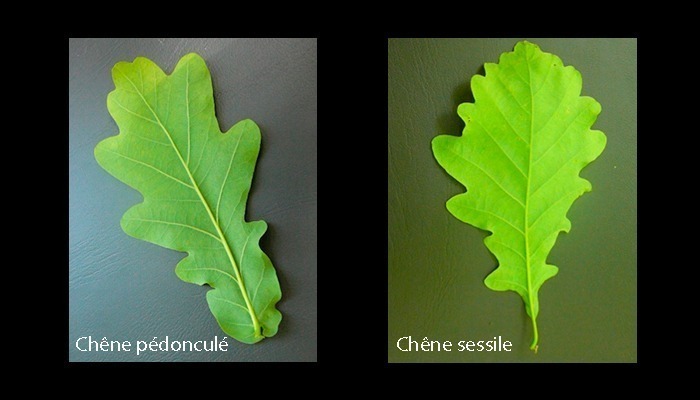How to recognize Pedunculate and Sessile Oak?
5 June 2018
The sessile oak and the pedunculate oak are close cousins. Physically, they look a lot alike, and at equal quality, their wood has the same uses.
The sessile oak and the pedunculate oak are close cousins. Physically, they look a lot alike, and at equal quality, their wood has the same uses. It is nevertheless essential to know how to distinguish them. Their character, their performance, their requirements differ practically on everything, which has important consequences on the forestry that it is advisable to apply to them.
Considering their strong resemblance, to distinguish the sessile oak from the pedunculate oak require to know what are the details that make the difference. Furthermore, among these details, some are easier to observe and more reliable than others.
Recognition of the fruits: on the ground, it is the difference of shape between the fruitings that allows to distinguish most certainly the sessile oak of the pedunculate oak. With oaks, this one is constituted by the acorn, the cupule which wraps the base of the acorn and, possibly, by the peduncle which connects the whole with the branch.
Pedunculate oak: the acorn with its cupule is connected with the branch by a long peduncle. The acorn has a elongated form, like a cylinder. When several acorns are on the same peduncle, they are clearly separated from each other.
Sessile oak: acorns and cupules are directly fixed to the twig. The acorn has a form similar to an egg, wider at the base. On the branch, acorns are grouped in heap.
Recognition of the leaves: to distinguish the two oaks through the differences of shape between leaves is also a reliable means. Three key elements should be observed : the length of the petiole, the base of the leaf, and the nervures. In addition, the observation of the distribution of leaves on the branch can help to validate a foliar diagnosis sometimes delicate. Indeed, the atypical, even puzzling cases, are not rare, especially in the mixed populatings. When the doubt persists, it is then necessary to do the diagnosis with several leaves (about ten) of the same tree.
Typical pedunculate oak leaf: the length of the petiole (connecting the leaf with the branch) is between 4 and 8 mm. The base of the leaf forms two auricles before being connected with the petiole. More than 3 protruding ribs in leaf lobe. On branches, leaves are grouped in heap which makes them hardly individualisables.
Typical sessile oak leaf: the petiole is from 13 to 17 mm in length. Frequents absence of auricles on the base of the leaf. Less than 3 protruding ribs in leaf lobe. On branches, leaves are distributed well which makes them easily individualisables.
Recognition of the buds: in the absence of leaves and of fruitings, the buds, when they are visible, can allow to distinguish the two different oaks. The buds of the sessile oak are egg-shaped sharp, those of the common oak – egg-shaped spherical.
Source: Fiche Technique Centre Régionale de la Propriété Forestière







